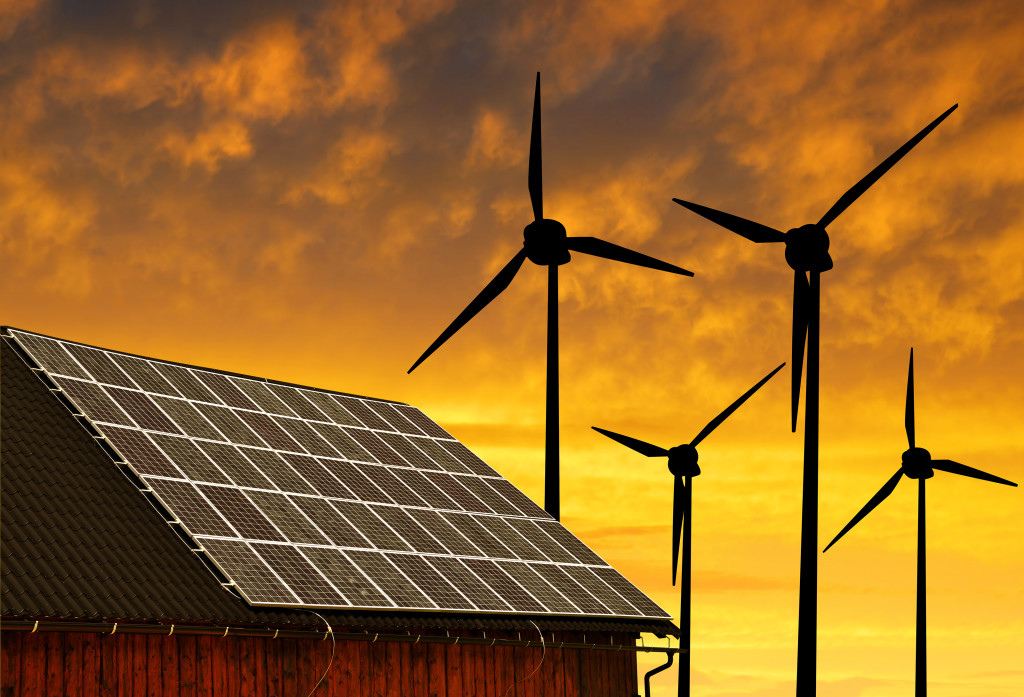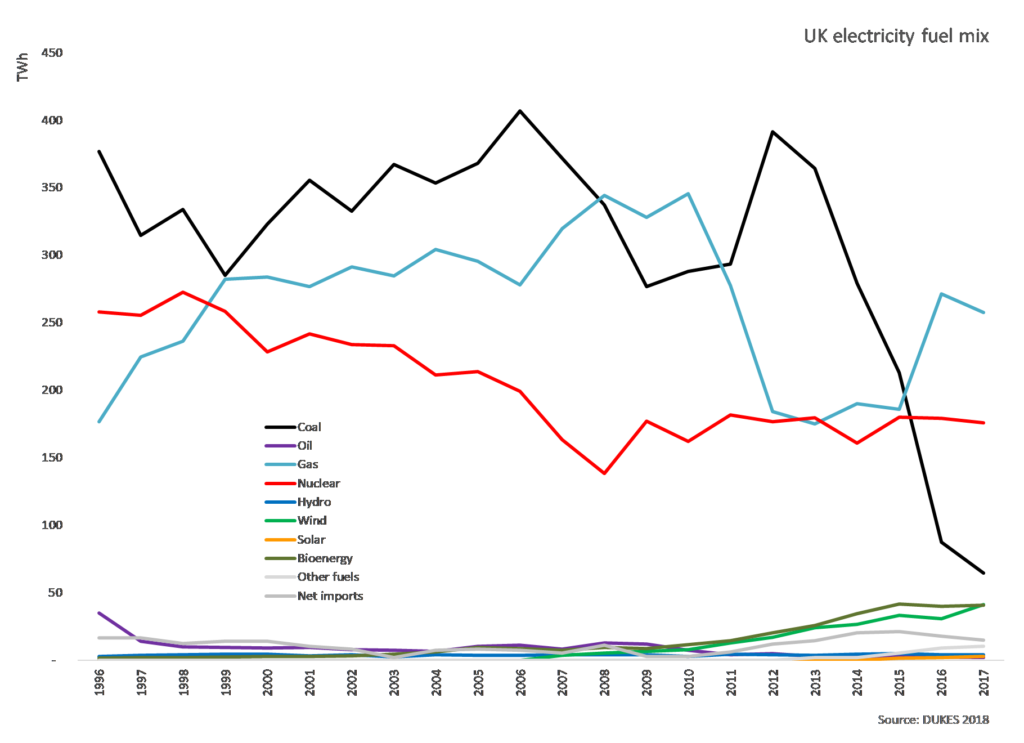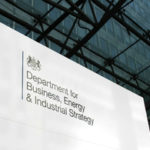News - Construction News
Building a renewable energy future

Compared with many countries, the UK has not done badly in developing renewable energy: so why is it now such a struggle getting new projects off the ground? And what can be done to improve things? Duncan Oswald, Senior Consultant at independent environmental consultant Eunomia, looks at the challenges and solutions for the sector.
In the last ten years the UK has decarbonised its electricity grid more than any other country. Greenhouse gas emissions per kWh of electricity generated have halved, dropping from around 500g to approximately 250g. However, much of this is the result of coal being replaced by gas, with only a modest contribution from renewables. Data from the Digest of UK Energy Statistics (DUKES)[1] below shows the dramatic reduction in coal use in the past few years, and the modest contribution from renewables.

In 2017, 81.1% of UK electricity was generated by the big three power sources: coal (10.5%), gas (41.9%) and nuclear (28.6%). Renewables in the broadest sense accounted for only 14.5%: wind (6.7%), bioenergy (6.6%), hydro (0.7%) and solar (0.5%).
The UK is facing a shortfall in electricity generation capacity. The demise of coal will continue[2] as the EUETS carbon price makes it increasingly expensive. Meanwhile, the UK’s ageing nuclear power fleet is slated for decommissioning by 2035[3]. The UK’s commitment to the Paris Agreement means that gas cannot be used to fill the gap and there are significant questions over whether adding more bioenergy would be beneficial. Given the climate in the UK, most of the energy needed will have to come from wind.
In the last ten years, wind generation in the UK has grown from almost nothing to a situation where you’re never far away from a wind farm. More importantly, wind is now contributing around 41TWh/yr to the country’s electricity generation. However, even if there were no increase in electricity consumption over the next ten years, the UK would need to add more than three times this level of development to make up the projected shortfall. Despite the UK’s early leadership in this area, it is crucial that we step up our action to ensure we can make up the difference in time.
Analysis presented in a recent Eunomia report[4] based on the BEIS Renewable Energy Planning Database shows a dramatic drop-off in renewable energy projects, including wind, as a result of policies implemented between 2012 and 2016. These include a de facto ban on planning permission for onshore wind and the precipitous removal of the Renewable Obligation (RO) scheme to avoid breaching the Levy Control Framework, designed to control the costs of supporting low carbon electricity. As a result, development of the cheapest form of renewable energy – onshore wind – has stopped, and new offshore wind projects have slowed to a trickle. Meanwhile, even though UK climate commitments require us to leave fossil fuels in the ground[5], the UK’s “Maximising Economic Recovery Strategy”[6] insists that we wring out every last drop.
The turn away from wind power doesn’t reflect popular sentiment. The latest (November 2018) report of the UK Government’s own regular Energy and Climate Change Public Attitude Tracker[7] shows that 80% of respondents support renewable energy. 66% said they would be happy to have a large-scale renewable development in their area. With onshore wind the cheapest form of energy generation – not just the cheapest renewable – it seems like an obvious area for the government to invest in and support. Instead, they are preventing developments that would be widely supported and could go ahead with little or no subsidy.
Calculation of subsidies is notoriously difficult[8] but by probably the most reliable estimate[9], the UK Government subsidises fossil fuels by more than renewables: dramatically more by some measures[10]. These subsidies make fossil fuel-based energy artificially cheaper, which in turn makes the financial case for renewable energy development more difficult. Climate breakdown is internationally recognised as the greatest threat to our ecology, economy and society, so why does the UK government continue to subsidise fossil fuel production? [11]
It used to be the case that North Sea oil and gas were net contributors to Treasury coffers so, while it might have been short-sighted, it was at least comprehensible that the sector was supported. However, this is no longer true[12]. Whatever the arguments for supporting the fossil fuel industry, there remains a political imperative to keep domestic and industrial energy bills down but it is unclear how distorting the market against the most popular, cost-effective and benign generation technology helps.
The shift from fossil fuels to renewable energy that we need is hampered by distortions in regulation and finance. The oil and gas sector is regulated to ensure that production is maximised, and subsidised to make it more competitive. The renewables sector is hamstrung by planning policy, receives considerably less financial support and has been damaged by inconsistent policy. However, the solution to all these problems is within easy reach.
Simply providing a level playing field would be enough to unleash the potential of the renewable sector. This could be readily achieved by removing subsidies from both (providing a welcome boost to the Treasury) and granting a presumption in favour of development to any site that is suitable for renewable energy (where there is no strong, demonstrable argument against it, such as the preservation of rare species and habitats).
These are cheap, popular actions that we can take right now that would put the renewable energy sector back on track to help the UK achieve its decarbonisation goals.
Duncan Oswald is a Chartered Environmentalist and Fellow of the Institute of Environmental Management and Assessment, ESOS Lead Energy Assessor and registered Environmental Auditor with 25 years’ experience in environmental consultancy. Duncan has worked with both public and private sector clients including UK public sector bodies and programmes such as Envirowise, Scottish Enterprise, HIE and Zero Waste Scotland, as well as a wide range of private sector companies, the Scottish Government, and a wide range of local authorities.
References:
[1] https://www.gov.uk/government/collections/digest-of-uk-energy-statistics-dukes#2018
[2] https://www.carbontracker.org/eu-carbon-prices-could-double-by-2021-and-quadruple-by-2030/
[3] https://en.wikipedia.org/wiki/Nuclear_power_in_the_United_Kingdom#Operating
[4] https://www.eunomia.co.uk/reports-tools/how-data-can-inform-the-deployment-of-renewable-electricity-generating-capacity/
[6] https://www.ogauthority.co.uk/news-publications/publications/2016/maximising-economic-recovery-of-uk-petroleum-the-mer-uk-strategy/
[7] https://www.gov.uk/government/statistics/beis-public-attitudes-tracker-wave-27
[8] https://www.carbonbrief.org/explainer-the-challenge-of-defining-fossil-fuel-subsidies
[9] https://stats.oecd.org/Index.aspx?DataSetCode=FFS_GBR
[10] https://www.imf.org/~/media/Websites/IMF/imported-full-text-pdf/external/pubs/ft/wp/2015/_wp15105.ashx
[11] https://www.ipcc.ch/sr15/
[12] https://www.carbonbrief.org/analysis-north-sea-industry-cost-uk-taxpayers-396m-2016
If you are interested in finding out more about key infrastructure trends today, you may wish to attend the flagship infrastructure exhibition at the NEC in April 2019 : UKIS 2019
Click here for more information on how to register or exhibit at the UK Infrastructure Show 2019.
If you would like to read more articles like this then please click here.
Related Articles
More News
- Reforms to Building Safety Regulator to accelerate housebuilding
15 Jul 25
Delays to building new high-rise homes will be unblocked through a new package of reforms
- New £39Bn Social and Affordable Homes Programme
14 Jul 25
Hundreds of thousands of social and affordable homes, including 60% for social rent.
- UK Introduces New Trade Measures to Support Steel Sector
11 Jul 25
Steel producers across the UK will benefit from stronger trade measures from 1 July.





